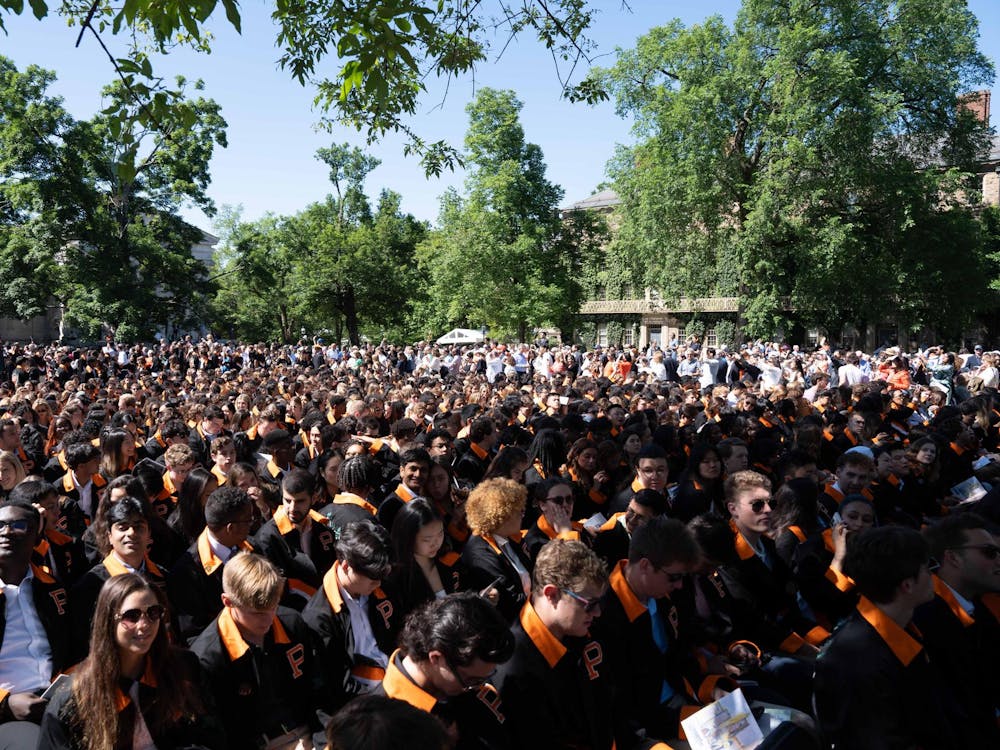Fifty percent of Princeton undergraduates participate in some form of intercollegiate athletics. Of those approximately 2,400 students, some 1,300 are club athletes on teams ranging from aikido and figure skating to Nordic skiing and softball.
However, while the University cites this high level of student athleticism in guidebooks, its financial support does not match its praise. Funding for club sports must increase if the program is to continue to accommodate its dedicated athletes, especially with the impending 500-student increase approved Saturday by the trustees.
This year, the club sports program was allocated $34,000 to fund more than 35 club sports. That figure is not likely to change for the 2000-2001 budget, which the student-led, staff-advised club sports executive council will design once team budget requests are submitted today.
Club sports resources are spread very thin, and the council's distribution decisions are sure to be difficult. While some clubs require little financial support, others are hard-pressed to pay for basic equipment, travel costs, league and tournament dues and officiating fees. There is simply not enough money for the club sports program to provide for everything. Therefore many teams must run substantial fund-raising campaigns or work dozens of varsity games to underwrite these needs themselves. Financing a club sport can require as much commitment as playing the sport itself.
On any given afternoon, hundreds of students head south after class for practice — varsity athletes to 1952 Stadium, DeNunzio Pool and Jadwin Gym, the surrounding fields and the boathouse on Lake Carnegie while club soccer, rugby, lacrosse and ultimate players continue on to West Windsor fields. Other afternoons and evenings, Dillon Gym is filled with badminton, basketball and volleyball practices while ballroom music can be heard from the dance room.
Weekends find club athletes piling into buses, teammates' cars and occasionally planes to face varsity-caliber squads at other colleges and world-class competitors from around the globe. The fierceness of competition varies according to the dedication and desires of the members of each club.
A few club sports hire coaches or instructors while others find volunteers across campus and the greater community — and on many teams, captains serve double-time as coaches. Yet Princeton clubs reach and win championships over teams trained by professional coaches — from the women's ultimate team's ninth-place finish at nationals in Boulder, Colo., last May, to the women's volleyball team's runner-up title in the Northeast regional championship in Boston at the beginning of this month.
Not all teams demand such commitment, but most can boast of an extremely dedicated core. Club athletes wear their team's gear — paid for by fund raising or out of their own pockets — with as much pride as any varsity player. This loyalty is impressive in its own right, particularly in the face of competition from the numerous activities available on campus. The University is right to laud the club sports program and encourage students to participate, but it should put its money where its mouth is.

The number of club athletes is growing as the program continues to expand — two new clubs were recognized in the past two months alone. With the 500-student increase to be phased-in gradually starting in 2003 or 2004, this rate can only accelerate. The breakdown of this expanded group of admitted students likely will parallel the current undergraduate student body. Extrapolating from today's numbers, one can assume that one-half of these new admits will be varsityand club-caliber athletes. The Wythes committee has said, however, that the increase in the student body will not swell varsity rosters.
But the frequency of athletes seeking intercollegiate competition is not likely to change. Students precluded from playing varsity will, as they do now, turn to club sports, which will have to absorb not just 25 percent but up to 50 percent of incoming students. What other extracurricular activity will face such a daunting increase?
The University can expect several new clubs, of course, and more participants in existing ones. The addition of skilled athletes should further add to the competitiveness of all club teams.
National tournaments, already an increasingly common goal among current clubs, could become the rule rather than the exception. These postseason berths are hard-earned, but costly to attend. While the women's rugby team was fortunate enough to host the Sweet Sixteen at West Windsor this weekend, it must travel to Florida for the Final Four. Other championships take place in Boston or Reno, Georgia and Texas.

Already close to bursting at the seams, the club sports program — a source of pride to participants and the University as a whole — is in need of greater financial support. Unless the University allocates additional funds, club sports may be overwhelmed by the active, enlarged student body the Wythes committee has promised to create. Georgia Garthwaite is from Lagunitas, Calif. She can be reached at georgiag@princeton.edu.







